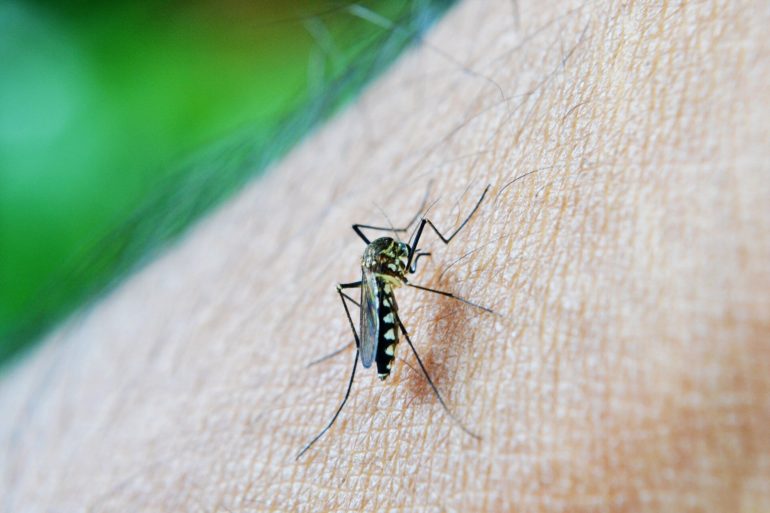Researchers from LSTM confirm that in areas with high pyrethroid resistance in mosquitoes, fewer people were infected with malaria parasites when piperonyl butoxide (PBO) + pyrethroid-treated bed nets were used. The updated Cochrane Review shows these benefits were sustained over two years.
Bed nets treated with pyrethroid insecticides are an effective way to reduce malaria transmission and have widely been deployed across Africa. However, the spread of insecticide resistance in mosquitoes threatens their impact. One way to control insecticide-resistant mosquito populations is by using insecticide synergists, such as PBO, alongside the insecticide in the bed net. PBO is not an insecticide, but it blocks the substance (an enzyme) inside the mosquito that stops pyrethroids from working.
A recently updated Cochrane review, led by Katherine Gleave at LSTM, assessed the available data to help better understand whether pyrethroid-PBO bed nets were more effective at reducing the burden of malaria compared to standard pyrethroid nets.
The World Health Organization (WHO) requires two randomized trials, in different malaria-endemic settings, demonstrating the public health benefit of an intervention before they can make a policy recommendation to support its use. This update of Gleave 2018 incorporates data from a second clinical trial conducted by researchers working with the Government in Uganda in partnership with LSTM scientists.
The review update included 16 trials, conducted between 2010 and 2020, that compared standard pyrethroid nets to pyrethroid-PBO nets. These consisted of 10 experimental hut trials and four village trials that measured the effect of pyrethroid-PBO nets on wild mosquito populations, as well as two randomized controlled trials (RCTs) which measured the impact of the nets on malaria infection in humans.
The analysis demonstrates that when mosquitoes had high levels of resistance to pyrethroids, pyrethroid-PBO nets performed better than standard pyrethroid-only nets, increasing mosquito mortality and reducing blood feeding rates. In addition, the two RCTs involving 10,603 participants in areas where mosquitoes are very resistant to pyrethroids, found that fewer people were infected with malaria when the population used pyrethroid-PBO nets.
LSTM’s Professor Hilary Ranson, senior author, said: “We now have a way to maintain the efficacy of insecticide-treated bednets, and overcome pyrethroid resistance in mosquito populations to reduce the burden of malaria in communities. Collating the evidence from the different trials in this systematic review greatly assists WHO in updating Global Policy recommendations on the use of pyrethroid-PBO bednets.”
Latest Cochrane review looks at pyrethroid-PBO nets for preventing malaria in Africa
More information:
Piperonyl butoxide (PBO) combined with pyrethroids in insecticide‐treated nets to prevent malaria in Africa. Cochrane Database of Systematic Reviews 2021, Issue 5. Art. No.: CD012776. DOI: 10.1002/14651858
Provided by
Liverpool School of Tropical Medicine
Citation:
Pyrethroid plus bed nets reduce malaria infection in areas of high resistance (2021, May 24)
retrieved 24 May 2021
from https://medicalxpress.com/news/2021-05-pyrethroid-bed-nets-malaria-infection.html
This document is subject to copyright. Apart from any fair dealing for the purpose of private study or research, no
part may be reproduced without the written permission. The content is provided for information purposes only.



